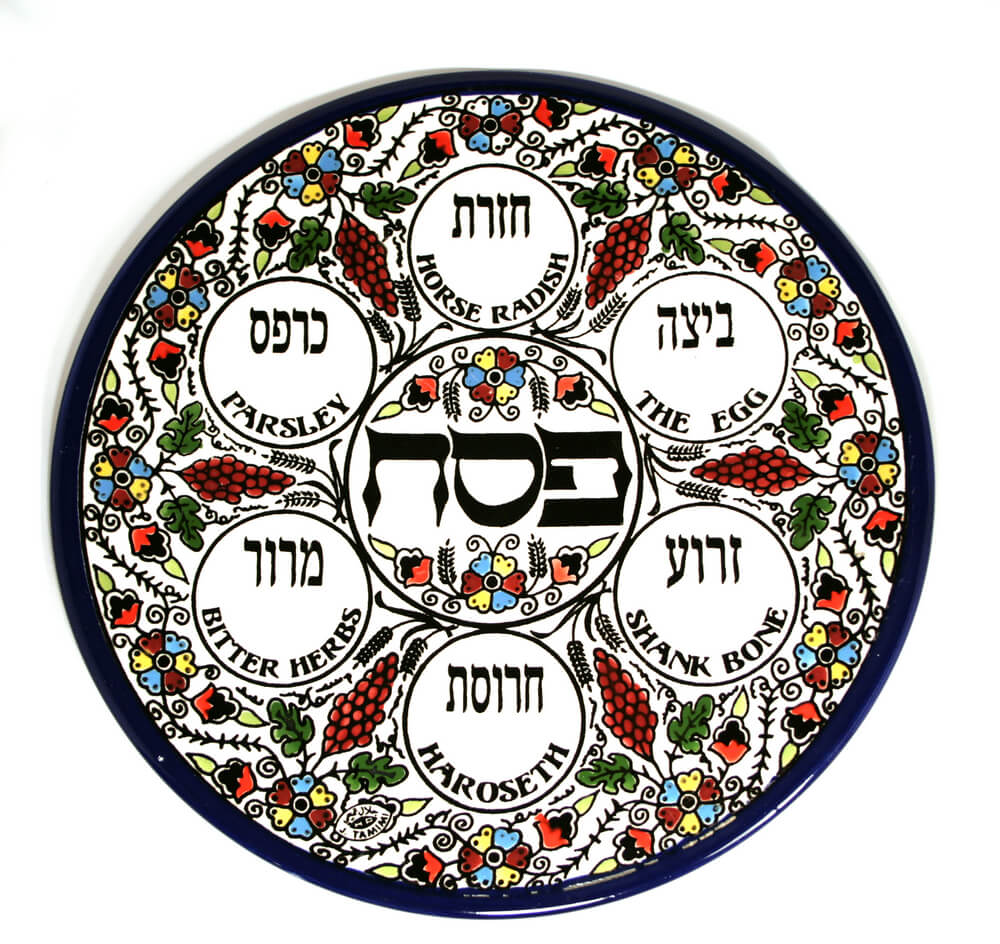
Traditional Seder Plate
There are seven Hebrew words on most Seder plates. Some Seder plates may merely have pictures. The Seder plate is a ceremonial plate that is used for the Passover Seders. There is no uniform requirement for the Seder plate.
The Seder marks the beginning of Passover, a holiday which is a reminder that Jews were slaves in Egypt and that they were freed from slavery by the Lord. Outside of Israel, Jews hold two Seders, one on each of the first two nights. In Israel, they have a Seder only on the first night. The most important steps during the ritual portion of the meal are listed on the plate. Seder means “order” in Hebrew. Each spot on the plate holds a food, almost all of which are eaten during the meal. The words are Pesach, marror, karpas, hazerret, haroset, zeroa, and beitzah. Each word has at least two meanings. One meaning is for the food that is placed on that spot on the Seder plate, the other is the symbolism or significance in the ceremony of the food. The remaining word is Pesach, which means “Passover” in English.
Maror means bitter herbs such as horseradish. Horseradish is eaten during the Seder to remind Jews of the bitterness of slavery. The Zeroa is the shankbone. The shankbone symbolizes the sacrifice that would have been made at the temple. However, because there is no temple in modern times, a bone is substituted. The shankbone is not eaten. Chazeret is a bitter vegetable such as romaine lettuce. The reason that romaine lettuce is used is because the leaves are not bitter, but the stem is. This is similar to how slavery came about in Egypt. At first, the Egyptian King Pharaoh had the Jews doing work voluntarily or for some pay. But, it eventually became slavery and forced labor. Karpas is a non-bitter, root vegetable. It is a reference to the backbreaking work of slavery. Generally, this is a green vegetable to symbolize that Passover is a spring holiday. Beitzah is a hard boiled egg. It is supposed to be burned on one edge. It represents the offering that was brought as a sacrifice during the time of the temple.
Because Seder means “order,” there is a certain order in which the foods are blessed, and eaten during the Seder. At some Seders, there may be a discussion on some of the points as well. The Seder plate acts as a centerpiece for the table, so the food on it is not generally eaten. Instead, bowls of food are passed around the table.